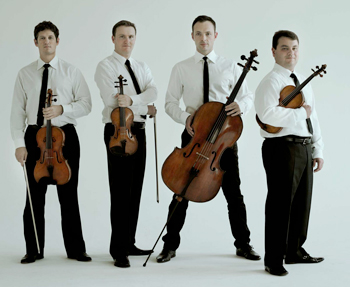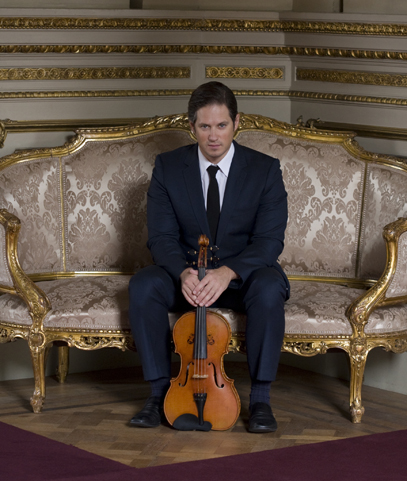by Mike Telin

Though the quartet was unavailable for a telephone interview, violist Ori Kam kindly agreed to respond to questions by email.
Mike Telin: The Quartet last performed on the Chamber Music Society series in February of 2015, and you’re returning with a very nice program. Could you please say a few words about it?
Ori Kam: Prokofiev’s first quartet is a spectacular example of how deeply rooted the composer’s musical language is in the Classical style. The first movement is in a strict sonata form, and uses textures and themes that follow the same ideas used by Haydn. It is in the two following movements that Prokofiev departs from the Central-European tradition and looks forward and eastward. While the second is set in a rough A-B-A structure, it is actually a sequence of tableaus, almost like a ballet. After a disjointed slow opening, the movement sneaks in with nervous energy that holds up through the last bar.
Prokofiev was so happy with the result of the third movement that he arranged it later for string orchestra, and used sections from it in other works. The movement is slow and full of pathos — again a departure from traditional structure, which calls for a major-key, light-hearted ending. The closing bars of the piece make for one of the most profound endings in all of music literature.
On to the Dvořák — he wrote some fifteen quartets. His earlier quartets, while compositionally strong, expose a composer enthralled by the great German masters of his day. They do not yet combine this German tradition with his Bohemian roots in the perfect symbiosis that his later quartets do. Today, you usually hear one of his three late quartets (Op. 96 “American,” Op. 105, or Op. 106). The great G-major quartet, Op. 106, is an extraordinary piece. While we’ve come to expect sweeping melodies from Dvořák, his use of the four string instruments is so imaginative that the effect is almost that of a symphony rather than a quartet.

OK: At this stage in our musical life, we have the privilege of creating projects and cycles. This makes it possible for us, and for our audiences, to get to know a composer or subject matter more intimately. This season, we embarked on a Dvořák project. The project explores his chamber music from the Terzetto for two violins and viola, through two quartets, the wonderful String Quintet, Op. 97, and ending with the Sextet, Op. 48. While the emotional arc of these masterpieces is quite broad, the music remains light and joyful, making this project a true delight for us as well as for the public.
MT: Since you were last here, you celebrated your 20th anniversary as an ensemble. What has been the Quartet’s secret to longevity?
OK: I think the most important thing is a deep appreciation and love for the music, mutual respect, and acknowledging the privilege of being able to share our music with audiences worldwide. I think in this context, the challenges that occur in quartet life seem minor.
MT: You’ve had a great relationship with Harmonia Mundi, and your recording of the Bartók Quartets Nos. 2, 4, and 6 was released back in October. I know you’ve performed the complete cycle. Are there plans for recording Nos. 1, 3, and 5?
OK: We are very fortunate to have this unique relationship with Harmonia Mundi. It’s so rare today for artists to have a supporting team that plans and nurtures long-term strategy. It’s amazing, and we have our repertoire taped out through 2025. Yes, we are happy to say that a second Bartók CD is planned quite soon.
Published on ClevelandClassical.com March 15, 2017.
Click here for a printable copy of this article



